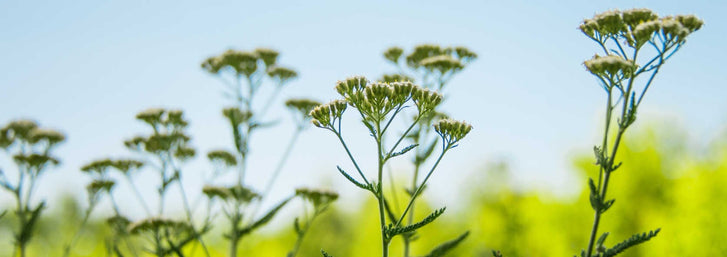
Jordan Freytag

“What’s the big deal with fresh herbs?” Some folks say. “I can get a plethora of the same herbs (and more) at my local grocery or specialty foods store.” Yes, this is true. There are more dried-herb options at stores, and it seems to be much easier for the consumer. But have you considered just how long those herbs have been dried when their being manufactured—not to mention how long they’ve been sitting on the shelf in your local store. Not only do they lose their pungent flavor and aroma in the drying process, they lose their nutritional value as well. This becomes even more apparent when we consider the hot containers they sit in and the jostling they experience when being shipped. Enjoying fresh herbs year-round is a lot easier than one might think and a lot tastier. Here are some basics so you can get started.
Light
As long as you have a window that lets in sunlight or a grow light, you’re ready to start your herb garden no matter what time of year it is! If you are using natural light, avoid a window that faces north, as not enough sun will reach your plants.
Water
Herbs thrive when given good drainage, so provide a saucer or a drain pan depending on your container. And if you live in dry climate, avoid clay pots because they tend to dry-out the soil more rapidly than other containers (try these planters instead). Keep the soil moist. It should feel kind of spongy but not soggy.
Heat
Herbs are like people as far as their temperature preference. They prefer an average temperature of 70 degrees. So, be sure to move the growing container away from the window on a particularly cold night and during the autumn and winter months.
Seeds
Some herbs can be trickier than others so we’ve come up with a list of what we think are the five best herbs to begin with:
Leave a comment
Your email address will not be published. Required fields are marked *
0 Comments
No Comments yet! Be the first to start a conversation
Further Reading

10 Natives of the Southwest USA for Pest Control
Written By Lara Wadsworth The Southwestern United States is a region incredibly unique to the rest of the country. The hot, dry weather can be challenging for plants and animals to thrive without additional help. That is why gardening with natives can ...

Ashleigh Smith
2024-04-157 min read0
Spring Into Action - Celebrating Earth Day
Written By Chelsea Hafer Spring is quickly arriving, and that means that Earth Day is near! Earth Day is the perfect occasion to appreciate our wonderful planet and all that it does for us and think of ways you can give back to it. In this blog post, w...

Ashleigh Smith
2024-04-154 min read0
Everything You Need To Know About Rain Gardens
Written By Lara Wadsworth Rain gardens are quickly gaining popularity for their perfect marriage of utility and beauty. What simply looks like a beautifully landscaped garden is actually a native habitat that serves as a storm drain and water sponge. B...

Ashleigh Smith
2024-04-085 min read1
Northeastern Natives for Attracting Beneficial Insects
Written By Lara Wadsworth The Northeastern United States is rich with American history, but did you also know that it is rich in plant biodiversity? Nature has learned through time how to work in harmony with the various species that attempt to thrive....

Ashleigh Smith
2024-04-086 min read1



